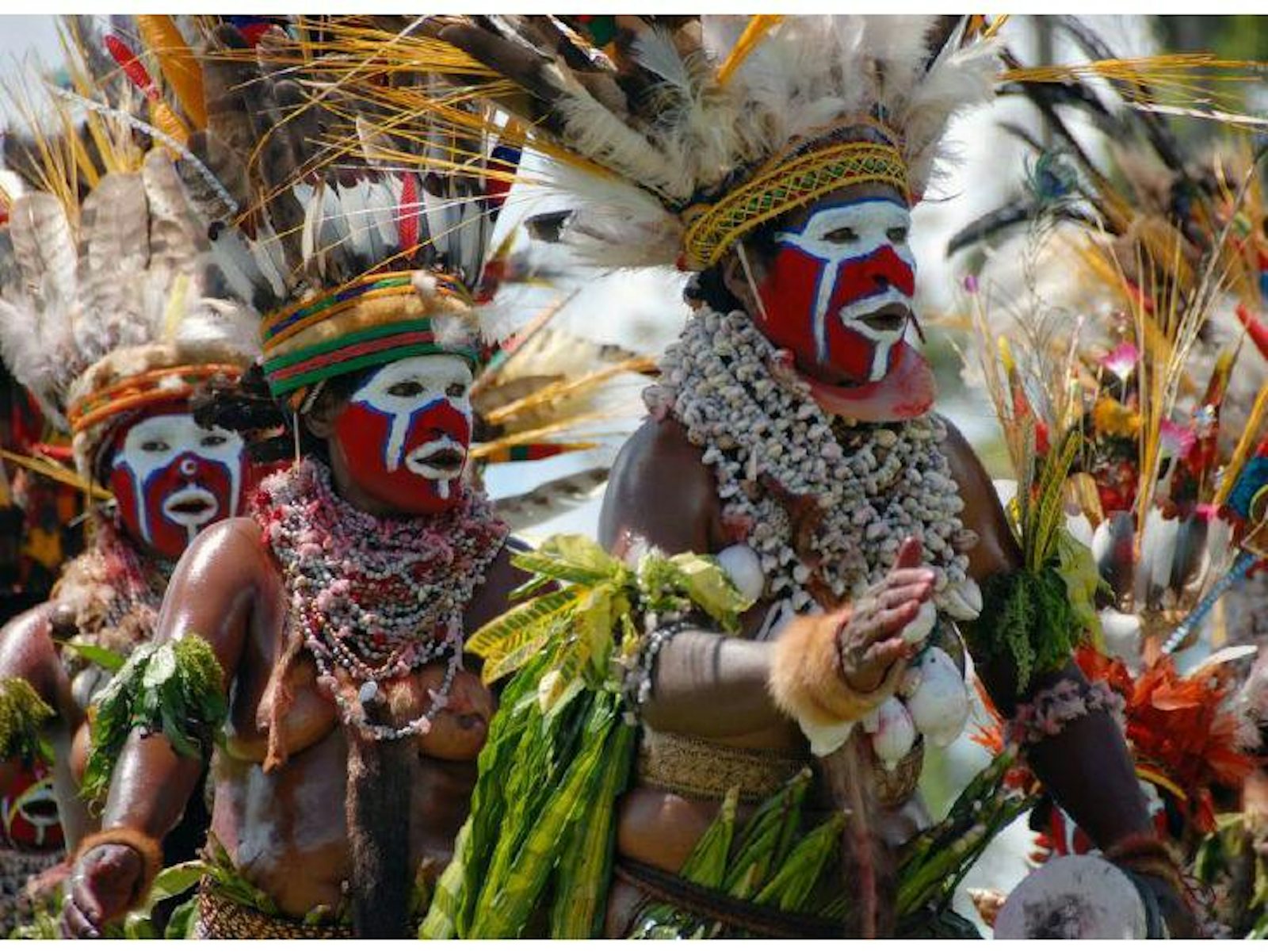
When people think of religions, they tend to turn to of the big five: Christianity, Islam, Judaism, Hinduism, and Buddhism. Although these are the most popular religions in the world, they are a minuscule sample of the thousands of religions that have existed over humanity’s history, and a small slice even of religions that exist today.
Despite the obvious differences between the big five, there are some deep similarities. In particular, the big five tend to focus on communication of important ideas through repeated exposure to scripture and speech.
The emphasis on language is not universal. For many religions, ritual play the major role in teaching people what the religion is all about. For example, many Melanesian religions have what are appropriately called “rites of terror.” These coming-of-age rituals often involve burning, bleeding, months of isolation, beatings in the middle of the night by people in costume, and food, water, and sensory deprivation. Many anthropologists who have studied these rites tell us that the very experience of going through them creates a lifelong, vivid, emotionally-charged memory that is crucial to understanding and belonging to the religion. Often there is no interpretation provided, and in some Melanesian fertility cults it is taboo to even discuss what happened during the ritual; in pre-colonial times such discussion was punishable by death. Each person goes through their own personal revelations brought about by the ritual, rather than reading or hearing about others’ revelations. Anthropologist Harvey Whitehouse calls this kind of religious transmission “imagistic”; it relies on the episodic memory of an experience that can’t be put into words. Because it is so powerful and emotional, it only needs to happen once.
Compare this with reading scripture or listening to a sermon, which is repetitive, based on language, interpreted by experts, and not particularly emotional. This kind of transmission is called “doctrinal.” Because it is language-based, complex, and low-affect, it is easily forgotten and requires constant repetition to be remembered. As such it uses semantic memory system rather than episodic. For example, Jews might feel they understand the lesson of the story of Abraham nearly sacrificing his son, Isaac, but not remember when they learned it.
These two forms of transmission have important effects on how religions change over time. As an imagistic religion spreads over a population, it mutates wildly from community to community. Because ritual processes and meanings are not clearly communicated with words, and because there are often no religious leaders to enforce interpretations, different people in different areas construe it in their own ways. As it spreads, it becomes less recognizable, to the point where it’s hard to say that it is even the same religion.
Doctrinal religions spread very differently: The same scripture is passed widely, potentially all over the world, and hierarchical organizations of religious experts enforce a uniform interpretation. This is not to say that mutation does not occur in highly doctrinal religions—the vast number of Christian denominations shows that it does—but it is much lower than the mutation rate of a typical imagistic religion. (See the related story, “How the Mormons Conquered America,” for more about how religions can selectively adopt or reject mutations.)
Religions can feel eternal, but it’s estimated that an average of two or three are created each day. Some catch on; most do not. Throughout their existences, they are subject to evolutionary forces over time. They are a part of cultural evolution. The big five religions we tend to focus on are peculiar because they are particularly fit to survive in the worldwide marketplace of religious ideas. As primarily doctrinal religions, they have built-in mechanisms to reduce mutation, and their existence was only possible after widespread literacy, a very recent event in the existence of humanity.
Imagistic religions, on the other hand, mutate very quickly—so quickly, in fact, that if one were to spread to distant lands and peoples, it would transform into something else entirely. It might be impossible for an imagistic religion to have worldwide popularity. Personal revelation cannot be accurately and easily transferred.
The biggest religions are not representative of most religions in the world and in history. Their special resistance to mutation makes them especially suited for global dominance.
Jim Davies is an associate professor at the Institute of Cognitive Science at Carleton University in Ottawa, where he is director of the Science of Imagination Laboratory.






























